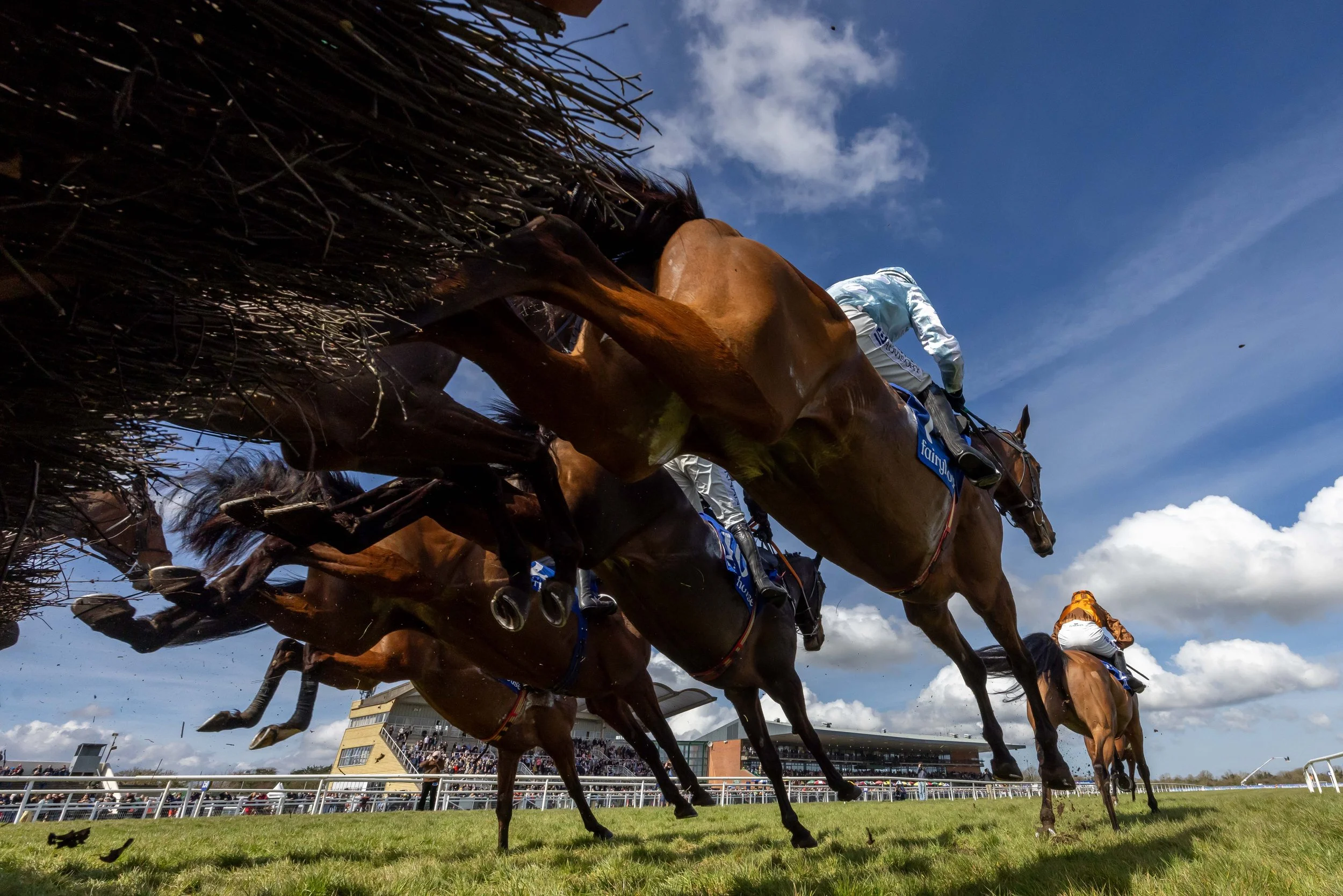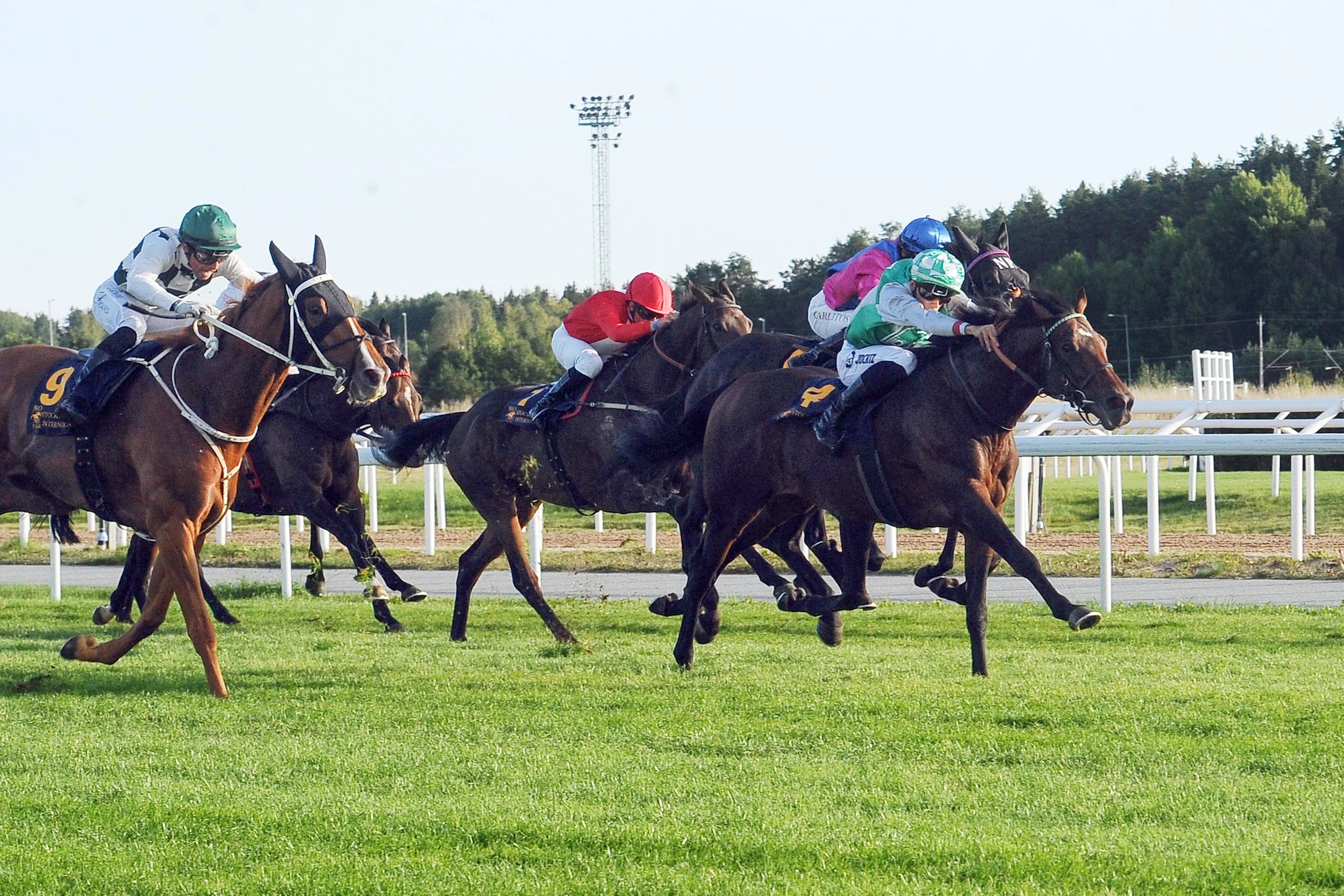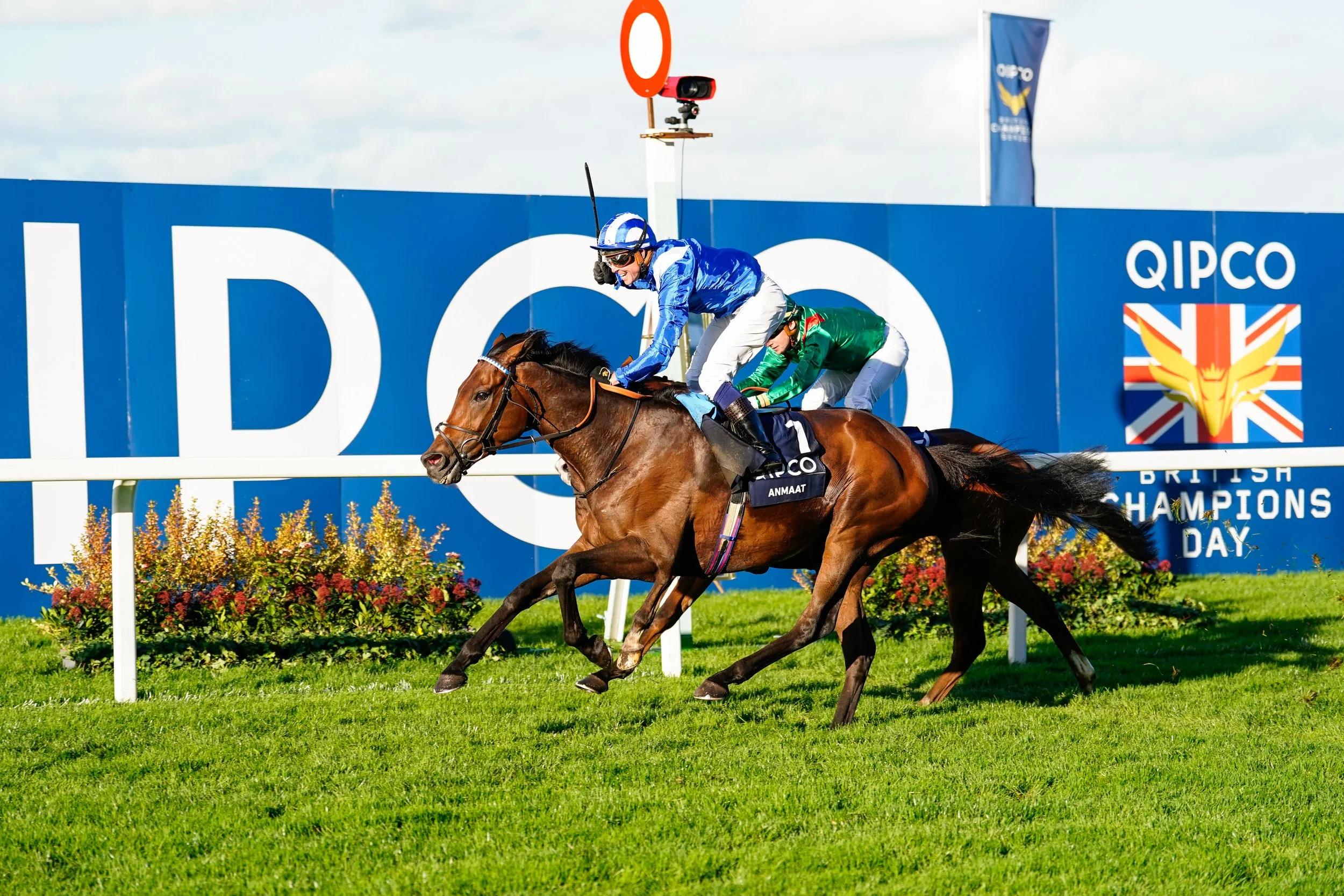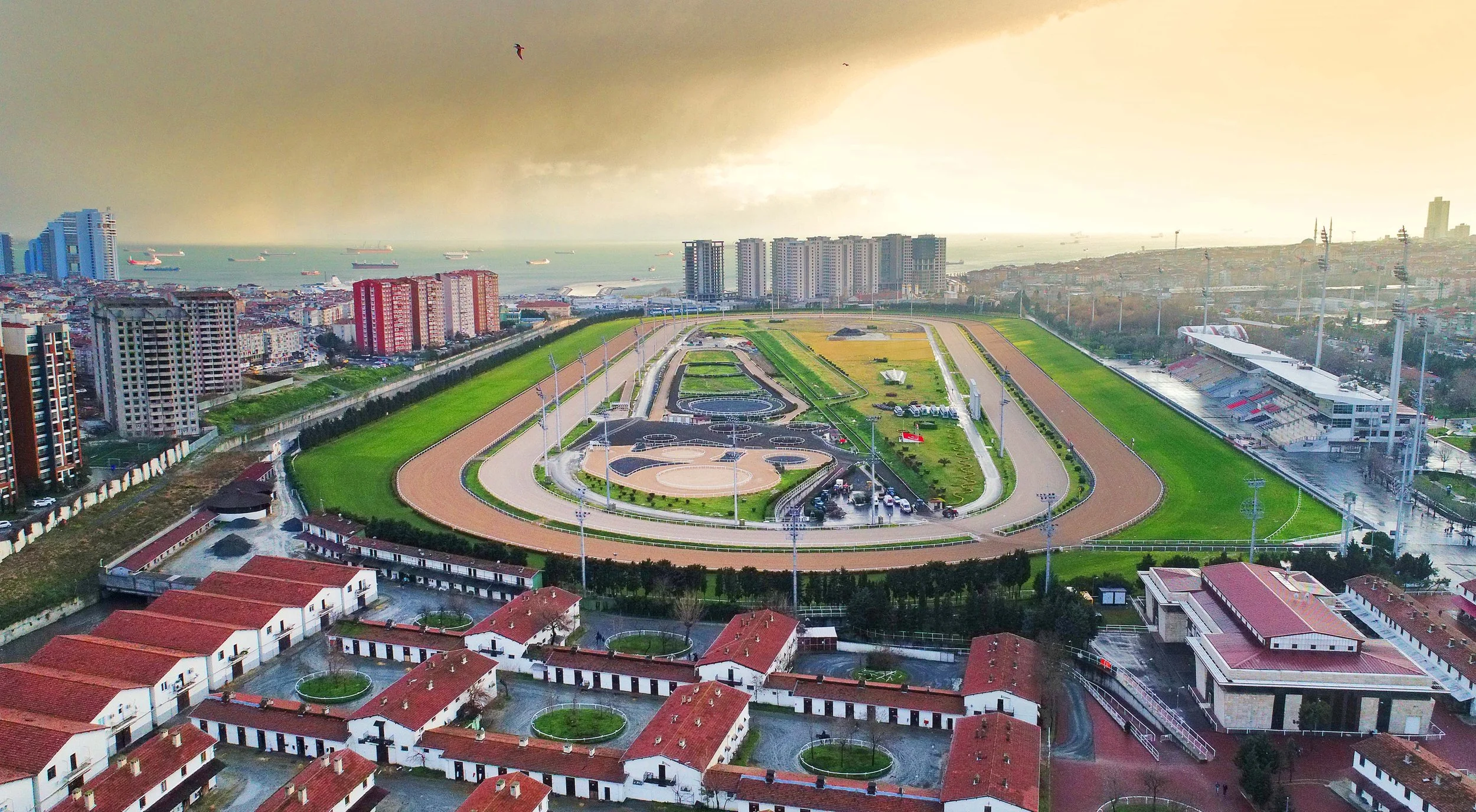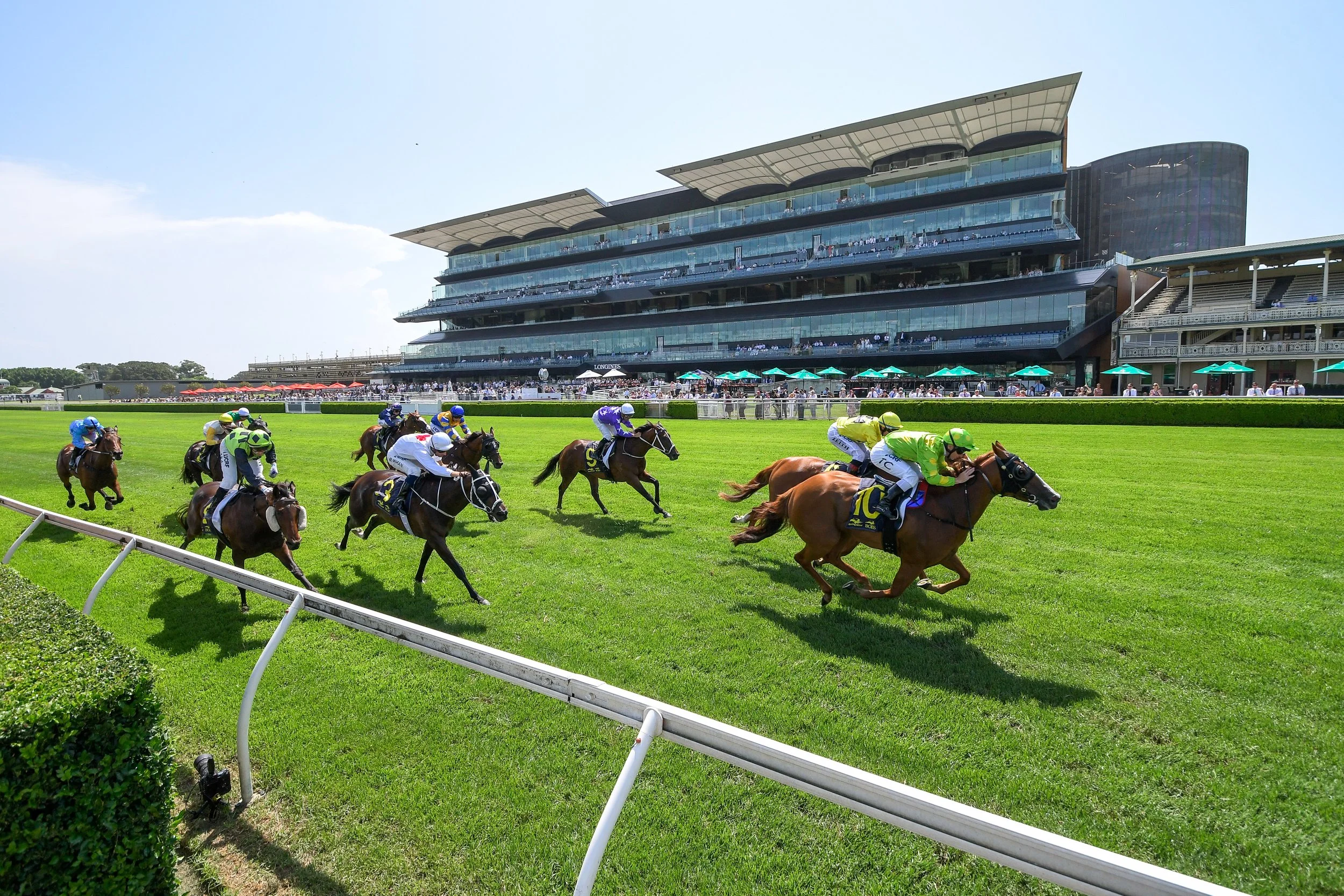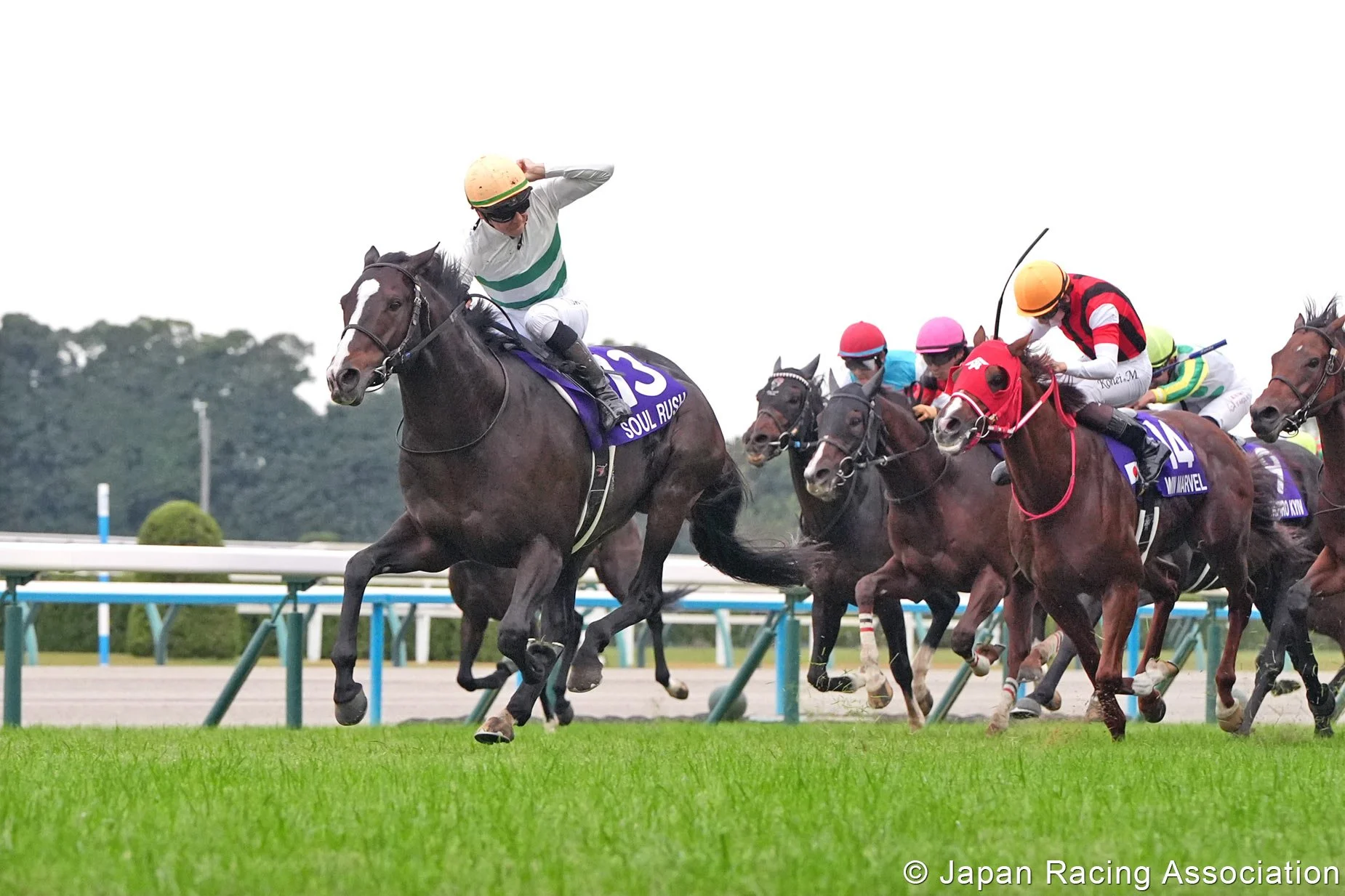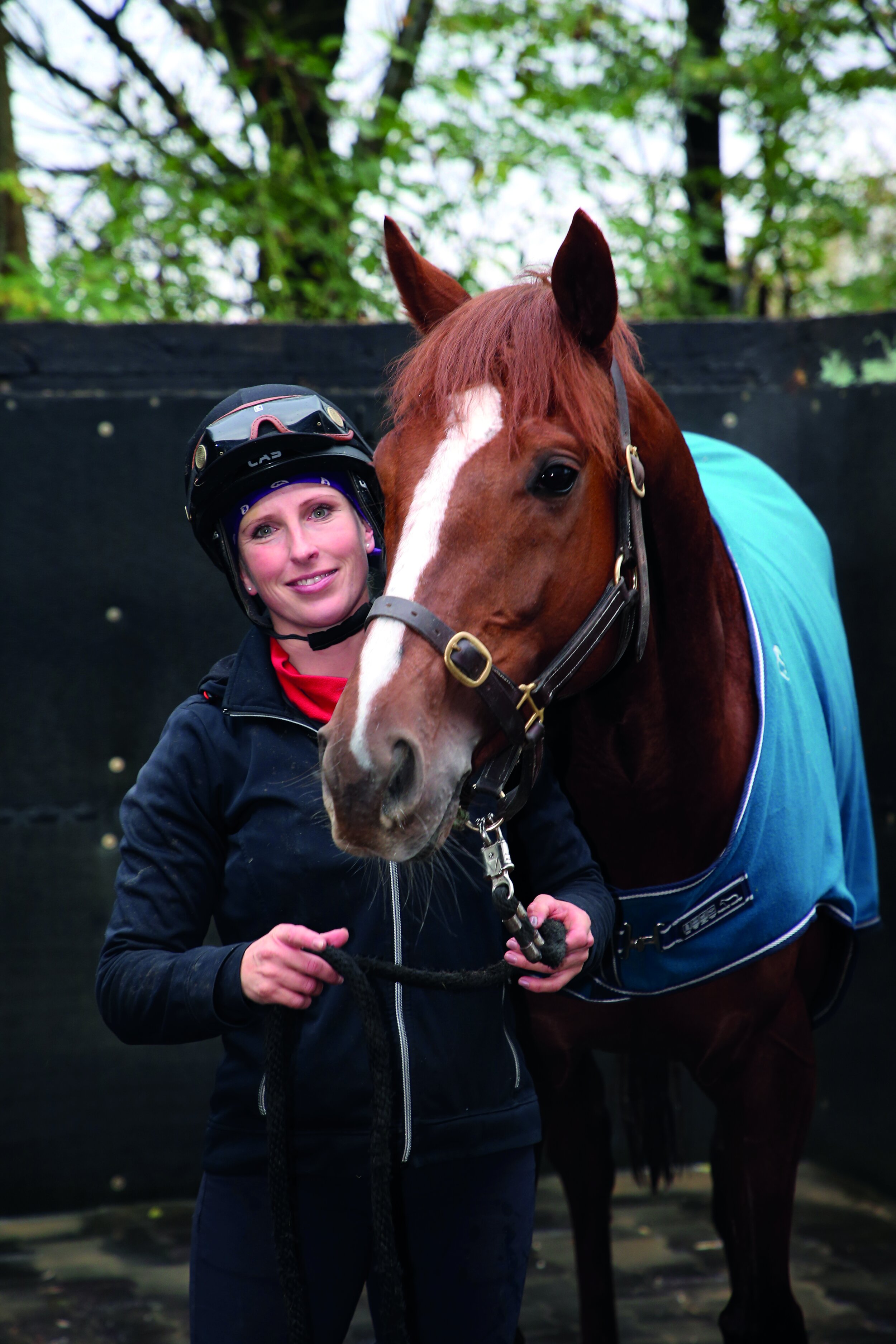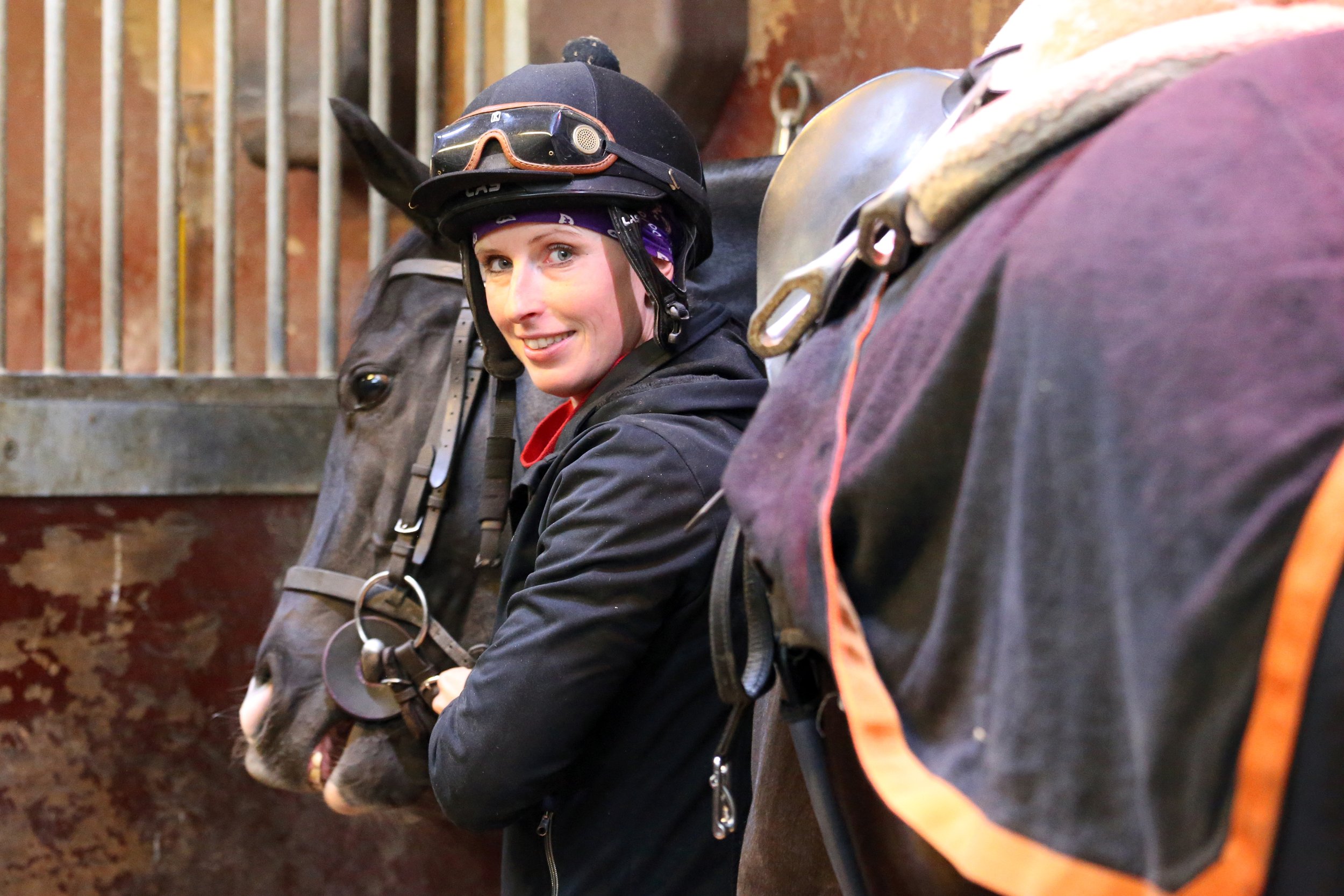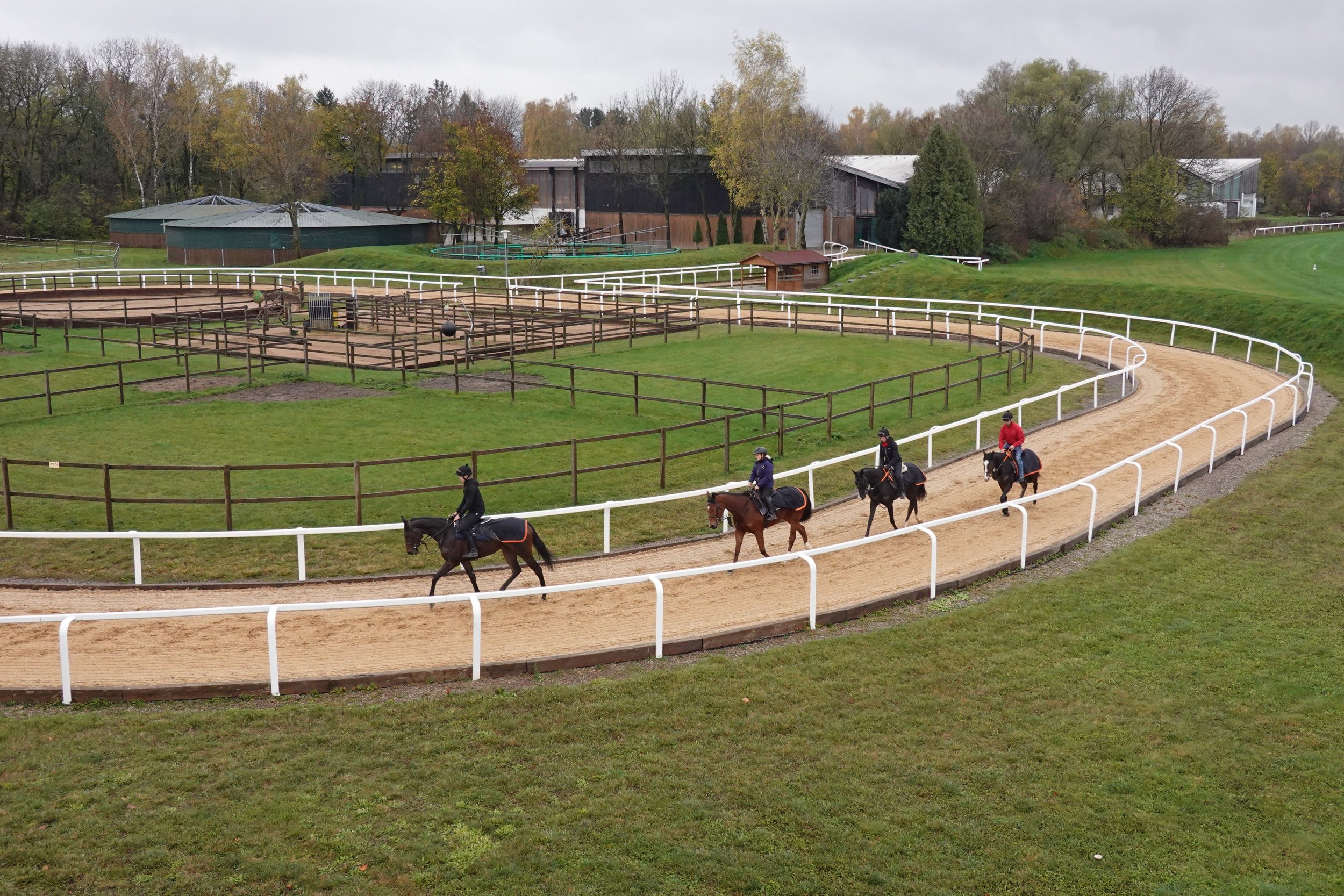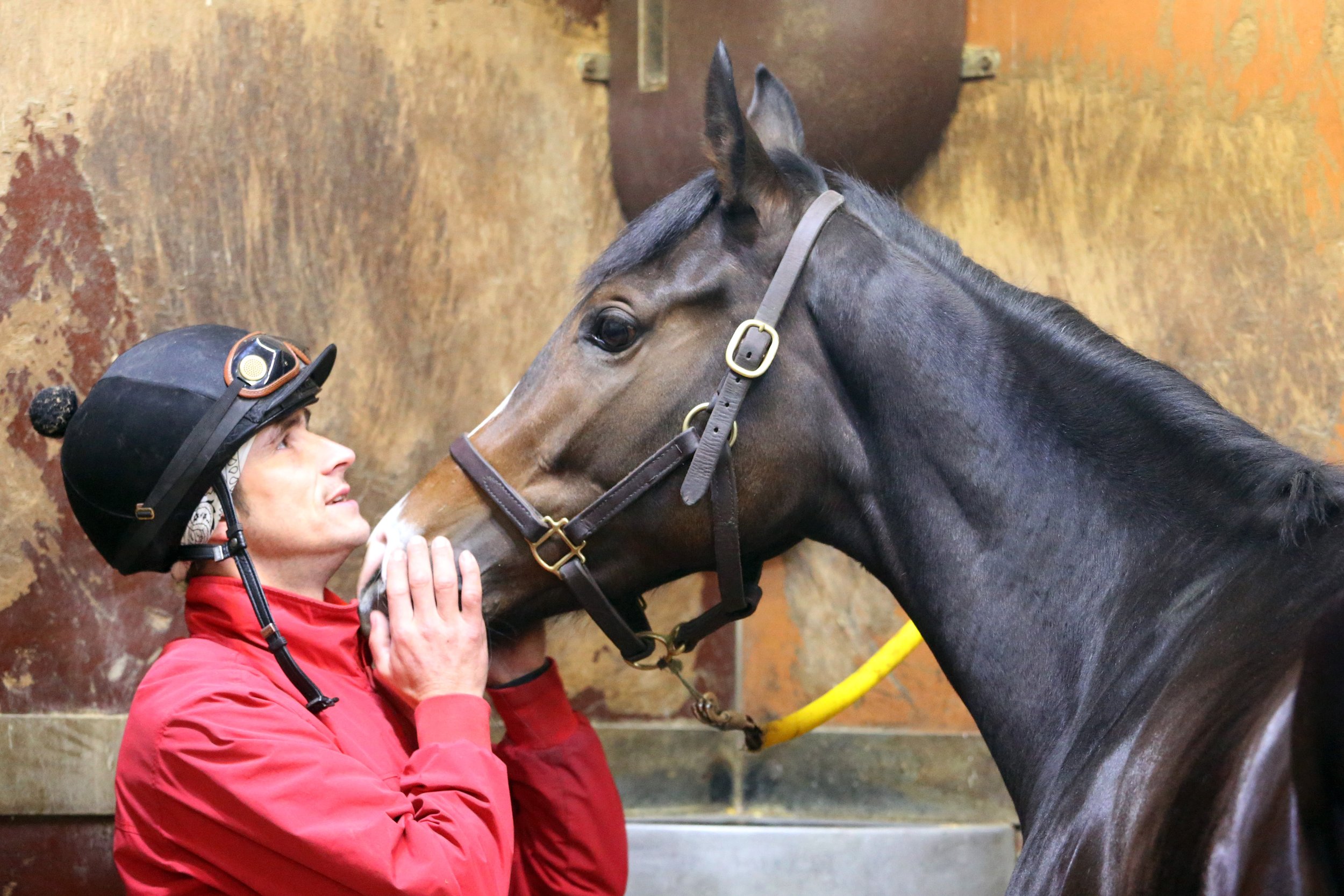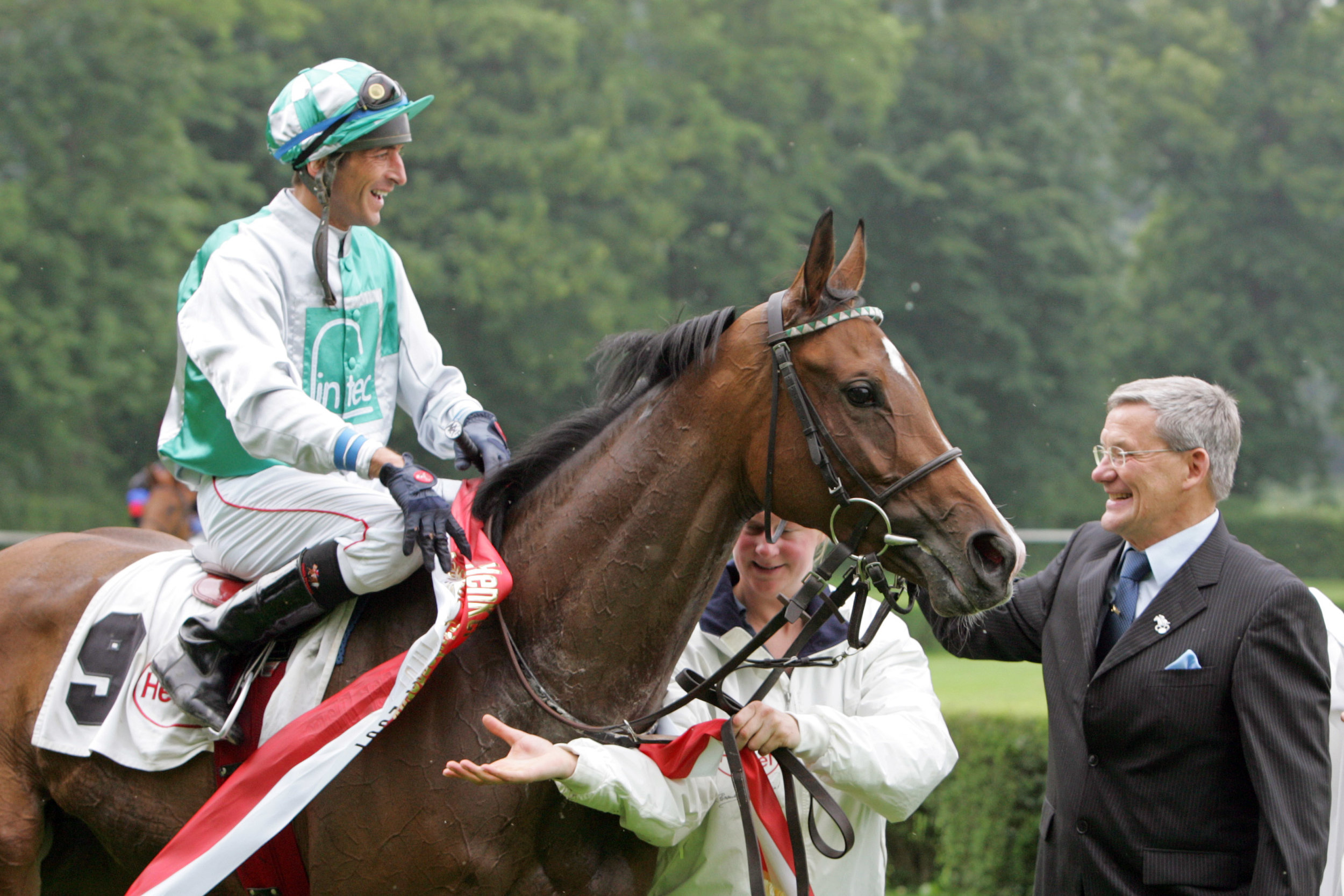Have Horse Will Travel - the international racing opportunities that trainers should be targeting this autumn
Ireland
The Irish Champions Festival takes place at Leopardstown and the Curragh 13th and 14th September respectively. The Curragh boasts the richest day of its year, with a card worth over €2.5m (£2.10m) in total. The highlights are the €600,000 (£503,865) Gp.1 Irish St Leger for three-year-olds and up, the Gp.1 Moyglare Stud Stakes and Gp.1 Vincent O’Brien National Stakes for juveniles and Gp.1 sprint The Flying Five Stakes, each worth €400,000 (£335,900).
The €200,000 (£168,000) Gp.2 Blandford Stakes, the €250,000 (£210,000) Tattersalls Ireland Super Auction Sale Stakes and two Premier Handicaps each worth €150,000 (£126,000) complete the card.
On the opening day at Leopardstown, the nine-race card features five Group races, including the €1.25m (£1.05m) Gp.1 Irish Champion Stakes 2000m (10f), the €400,000 (£335,900) Gp.1 Matron Stakes, €200,000 (£168,000) Gp.2 Solonaway Stakes, €150,000 (£126,000) Juvenile Stakes, €100,000 (£84,000) Gp.3 Tonybet Stakes, the €100,000 (£84,000) Ingabelle Stakes and two Premier Handicaps each carrying €150,000 (£126,000).
In addition to the Irish Champions Festival, the Autumn Racing Weekend will be held at the Curragh 27th and 28th September, which includes the 1400m (7f) €1m (£850,000) Goffs Million, the richest race for two-year-olds in Europe, and the richest handicap in Europe the 3200m (16f) Irish Cesarewitch, worth €500,000 (£425,000). The meeting will also include the Gp.2 Beresford Stakes (€120,000/£101,700) 1600m (8f) for juveniles, celebrating its 150th anniversary, 1200m (6f) Gp.3 Renaissance Stakes (€60,000/£50,800), and 1400m (7f) Gp.3 Weld Park Stakes (€60,000/£50,800).
Irish jumps series
For National Hunt runners, a series of seven 3300m (2m1f) 10-hurdle Irish Stallion Farms EBF Academy Hurdle races will be run in Ireland from October to December. The first is at Cork on 12th October, followed by Fairyhouse 4th October, Punchestown 13th November, Cork 23rd November, Navan 6th December, Naas 15th December and concluding at Leopardstown 29th December.
The races are open to three-year-olds which have not had any previous run under either Rules of Racing or I.N.H.S. Rules other than in Academy Hurdle races. Horses that run in any of the seven races can continue their careers in bumpers, maiden hurdles or Point-to-Points.
Jonathan Mullin, Director of Racing at HRI, explains, “Each of the races offer a Sales Voucher, similar to the IRE incentive for the owners of any eligible Irish-bred horse which wins or is placed either second or third. Each winning owner will receive a €5,000 voucher while the owners of the runner-up and the third-placed horses will each receive €3,000 and €2,000 respectively.”
Additionally, all seven races are part of the Weatherbys National Hunt Fillies Bonus Scheme, so three-year-old Irish-bred fillies that win an Irish EBF Academy Hurdle in 2025 will be awarded an additional €7,500 bonus on top of the race prize money and will still be eligible for the €5,000 scheme bonuses available if subsequently winning a bumper or a steeplechase, but not a maiden hurdle.
Germany
This season, Deutscher Galopp introduced 12 premium handicaps and 15 Premium Racedays, which included seven Group 1 racedays, guaranteeing at least €15,000 (£12,500) in handicaps and maiden races on those days.
The BBAG Auktionsrennen at Mülheim 4th October is worth €52,000 (£43,600), run over 2000m (10f) for three-year-olds offered as yearlings at the 2023 BBAG Sale, while at Krefeld 15th October is the €55,000 (£46,000) Gp.3 Herzog Von Ratibor-Rennen for two-year-olds, over 1700m (8.5f).
The Berlin-Hoppegarten card 3rd October is one of the Premium Racedays and as well as including the 2000m (10f) Gp.3 Preis Der Deutschen Einheit, €55,000 (£46,000) for three-year-olds and up, there is also a 1400m (7f) BBAG Auktionsrennen for three-year-olds offered as yearlings at the 2023 BBAG Sale, and a support card of seven other races from €15,000 (£12,500) to €22,000 (£18,500). Similarly, 19th October at Baden-Baden sees a nine-race card with the guaranteed minimum that also features the Gp.3 €155,000 (£130,000) Preis Der Winterkönigin for two-year-olds over 1600m (8f), and the Gp.3 Herbst Trophy €55,000 (£46,000) over 2400m (12f) for three-year-olds and up.
The 26th October Hannover Premium card includes the €55,000 (£46,000) Gp.3 Herbst-Stutenpreis over 2200m (11f) for three-year-olds and up and two €25,000 (£21,000) juvenile races over 2000m (10f) and, for fillies only, 1400m (7f). The Premium Racedays conclude at Munich 8th November, where the feature is the Gp.1 Grosser Allianz Preis Von Bayern over 2400m (12f) worth €155,000 (£130,000), and another €52,000 (£43,600) BBAG Auktionsrennen, this time for two-year-olds over 1600m (8f) offered as yearlings at the 2034 BBAG Sale.
Sweden
Sweden’s showcase takes place at Bro Park 12th September with a card that includes the Gp.3 Stockholm Cup International (Gp. 3) over 2400m (12f) for three-year-olds and up and worth SEK 1,000,000 (€91,700 / £76,900). The three Listed races on the support card are each worth SEK 550,000 (€50,500 / £42,350) and open to three-year-olds and up, namely the Bro Park Sprint Championship 1200m (6f), the Tattersalls Nickes Minneslöpning 1600m (8f) and the Lanwades Stud Stakes for fillies 1600m (8f).
Later Listed opportunities for three-year-olds up, each worth SEK 400,000 (€36,700 / £30,800), are the 2400m (12f) Skånska Fältrittklubbens Jubileumslöpning and the Peas and Carrots Mile over 1600m (8f) at Jägersro Galopp 5th October, and the 2100m (10.5f) Songline Classic at Bro Park 26th October.
Spain
The highlight of the Spanish season is Champions Day 19th October in Madrid, with a card that includes the Gran Premio Memorial Duque de Toledo over 2400m (12f) for three-year-olds and up, with a value of €50,000 (£42,000) and the Gran Premio Ruban over 1200m (6f) worth €40,000 (£33,500). The €40,000 (£33,500) Gran Criterium for two-year-olds is run over 1600m (8f) 26th October.
British Champions Day
Opening a card that features the British Champions Long Distance Cup (€590,000/£500,000), the British Champions Sprint Stakes ((€590,000/£500,000), the British Champions Fillies and Mares Stakes ((€590,000/£500,000), the Queen Elizabeth II Stakes (€1.36m/£1.15m), the Champion Stakes (€1.53m/£1.3m) and the 1600m (8f) Balmoral Handicap (€295,000/£250,000) is the newly-introduced Two-Year-Olds Conditions Race, worth €295,000 (£250,000), taking the total prize money on the day to €5.13m (£4.35m). Open to two-year-olds, the 1200m (6f) conditions race, like all races at this distance at Ascot, will be run over the straight course.
Turkey
The Jockey Club of Türkiye hosts seven international races in Istanbul at Veliefendi Racetrack, as part of the International Racing Festival run on the first weekend in September. The highlights are the €62,650 (£53,400) 2000m (10f) Gp.2 Anatolia Trophy for three-year-olds up, €190,000 (£162,000) Gp.2 1600m (8f) Topkapi Trophy for three-year-olds up, the €98,700 (£84,150) Gp.3 1200m (6f) Queen Elizabeth II Cup for two-year-olds, €197,500 (£168,400) Gp.3 2400m (12f) Bosphorus Cup for three-year-olds up and the Gp.3 1600m (8f) €142,400 (£121,400) Istanbul Trophy, entries closing 6th August. There is a transport subsidy for international races, $18,000 for round-trip per horse arriving from the continents of America (North and South), Oceania, Africa and Far East countries, €12,000 for round trip per horse arriving from Europe and United Arab Emirates. Any horses scratched from the race after arrival by veterinary report will still receive transportation subsidy. The Gp.3 Malazgirt Trophy for purebred Arabians over 1600m (8f) will also be part of the card.
USA
Kentucky Downs is home to America's only European-style 2000m (10f) all turf racecourse, hosting just seven days racing from 28th August to 10th September, entries closing from 16th August, when emailed expressions of interest must also have arrived for the invitationals. The feature races are the $3.5m (€3m/£2.6m) Gr.3 Nashville Derby Invitational over 2400m (12f) for three-year-olds, the $2.5m (€2.19m/£1.86m) Gr.3 1600m (8f) Mint Millions Invitational and the 2400m (12f) Gr.2 Kentucky Turf Cup Invitational of the same value which is also a "Win and You're In Breeders' Cup Turf" race. Both races are for three-year-olds and up.
Carrying $2m (€1.75m/£1.48m) each are the Gr.3 Kentucky Downs Ladies Turf for fillies and mares three-year-olds and up over 1600m (8f), the Gr.2 Kentucky Downs Ladies Turf Sprint 1200m (6f) for fillies and mares three-year-olds and up, the Gr.1 1200m (6f) Franklin-Simpson Stakes for three-year-olds, the Listed 1600m (8f) Gun Runner for three-year-olds, the Gr.2 1200m (6f) Music City Stakes for three-year-old fillies, the Gr.3 2000m (10f) Kentucky Downs Ladies Marathon Invitational for three-year-olds and up fillies and mares, the Gr.3 2000m (10f) Dueling Grounds Oaks Invitational three-year-old fillies, and the Gr.2 Kentucky Downs Turf Sprint 1200m (6f) for three-year-olds and up which is another of the "Win and You're In Breeders' Cup Turf Sprint Division” races.
Each carrying purses of $1m (€870,000/£738,000) are the Bowling Green Gold Cup Invitational 3200m (16f) for three-year-olds up, the 1600m (8f) Listed Kentucky Downs Juvenile Fillies, the 1200m (6f) Listed Kentucky Downs Juvenile Sprint, the 1600m (8f) Listed Kentucky Downs Juvenile Mile, and the 1200m (6f) Untapable Stakes for two-year-old fillies. The Listed Tapit Stakes over 1600m (8f) for three-year-olds up heads three races worth $500,000 (€437,000/£370,000), alongside the 1600m (8f) NTL Tight Spot Overnight Handicap for three-year-olds up, and the 1600m (8f) Listed One Dreamer for fillies and mares three-year-olds up. Maiden races, already the richest in the world, carry €181,000 (€158,000/£133,300) per race.
“We want to build the Nashville Derby into a race that American and European horsemen alike point to and buy horses for,” says Ron Winchell, co-managing partner of Kentucky Downs with Marc Falcone. “We’ve positioned the Nashville Derby so that it fits into a big-money circuit for three-year-old turf horses.”
The 42nd running of the Breeders’ Cup will be held for a fourth time in Del Mar, California, on the edge of the Pacific Ocean in San Diego “where the turf meets the surf”. Consisting of 14 Grade 1 races with purses and awards totalling more than $31m (€27.11m/£22.97m), the meeting takes place Friday 31 October and Saturday 1st November.
“Our return to Del Mar in back-to-back years marks the continuation of a wonderful collaboration and successful partnership, both with our friends at the track and with the greater San Diego area,” says Drew Fleming, President and CEO of Breeders’ Cup Limited. “We look forward to once again gathering where the turf meets the surf as the world’s best thoroughbreds put on an incredible show.”
“We couldn’t be more excited about hosting back-to-back Breeders’ Cup World Championships and welcoming the very best in international racing back to the town of Del Mar and the greater San Diego area,” said Joe Harper, CEO of the Del Mar Thoroughbred Club. “The Breeders’ Cup represents the pinnacle in world-class racing and the organisation’s willingness to return here again is a testament to the quality of our racing facilities, our idyllic weather, and the warm hospitality shown to our visitors by the local community.”
With 14 championship races held over two days, Future Stars Friday sees the two-year-old championships run for purses upwards of €931,130 (£783,500) and €1.9m (£1.6m). Saturday boasts nine races, culminating with the €6.5m (£5.5m) Gr1 Breeders’ Cup Classic. The “win and you’re in” series consists of 69 of the best races from around the world, from June to October, awarding each winner an automatic and free entry into the Breeders' Cup World Championships.
Bahrain
The Bahrain Turf Series is fairly new to the calendar and has seen just five renewals to date. Running from December through to February, each race carries prize money from €73,750 (£62,850) up to €91,880 (£78,200) with total and the series is designed to attract international runners rated 85-100 to compete against local Bahrain-based horses.
“We believe the time is right to build on the success of the Bahrain Turf Series and expand the international programme to incorporate our season’s premier races,” explains His Highness Shaikh Isa Bin Salman Bin Hamad Al Khalifa, Chairman of the Bahrain Turf Club. “Our most prestigious races, including the Crown Prince’s Cup and the King’s Cup, fall within the Bahrain Turf Series calendar, and are intended to make racing in Bahrain an even more attractive and compelling proposition for international visitors.”
In total, the Series of sprint and middle-distance races comprises of 12 races, six in each division, with each race carrying bonus prizes for the horses accumulating most points in their respective division.
At time of going to press the dates and 2025/26 prize monies were not available, but last year saw significant increases. In December are two 1000m (5f) and two 2000m (10f) races for horses rated 84-100 and a 1200m (6f) and 2000m (10f) race for those rated 80-100.
In January there are two conditions races, over 1000m (5f) and 1800m (9f). February, when the season concludes, sees opportunities for horses rated 80-100 at 1000m (5f), 1200m (6f), 1800m (9f) and 2000m (10f). For those seeking black type, the 2000m (10f) Gr2 Bahrain International Trophy in November for three-year-olds and up is establishing Bahrain as a premier horseracing destination. Run on turf, in 2024 the race was worth €921,858 (£785,315) in total, with €553,115 (£471,178) to the winner.
Entries close 2nd October with supplementary entry stages later in October, but there are three 'Automatic Invitation' races, for the first, second and third from The Royal Bahrain Irish Champions Stakes and the Gp.3 Strensall Stakes at York. The Bahrain Turf Club will provide air tickets for overseas connections and hotel accommodation on a room only basis. Shipment of invited horses will be arranged and paid for by the Bahrain Turf Club.
Australia
The Melbourne Cup Carnival needs no introduction and the Cup itself is only one of 10 Gp.1 racedays during the 22-day season at Flemington. The 3200m (16f) Gr1 Melbourne Cup will be worth A$8.66m (€4.93m / £4.14m) this year, with prize money down to 12th.
During the week there are three €1.8m (£1.6m) weight-for-age Gr1s, the 2000m (10f) Champion Stakes, 1600m (8f) Champions Mile and the 1200m (6f) Champions Sprint. “It is always a great thrill to host international connections who make the journey to Melbourne,” Leigh Jordon, the VRC Executive General Manager, tells us.
More recently the Sydney Everest Carnival held at Royal Randwick and Rosehill Gardens has competed for equal attention, running from 21st September to 9th November, and boasting the world’s richest race on turf, The Everest, over 1200m (6f) in mid-October at Royal Randwick and worth A$20m (€11.3m / £9.5m). The opening day at Royal Randwick features two weight-for-age races, each with a total prize of €615,840 (£520,265) for three-year-olds and up, The 7 Stakes 1600m (8f) and the Gp.2 1100m (5f) Shorts. Randwick later hosts the iconic 1600m (8f) Epsom Handicap, a Gp.1 worth €924,000 (£780,500) and on the Everest supporting card is the €3m (£2.6m) Gp.1 King Charles III Stakes over 1600m (8f).
At Rosehill Gardens, the Hill Stakes over 2000m (10f), and 1800m (9f) Five Diamonds each carry a purse of €1.2m (£1m), with the €6.2m (£5.2m) Golden Eagle over 1500m (7f) the showpiece in November.
Japan
The JRA offers travel incentives for particular overseas horses for Group 1 races and for invited overseas horses for the Japan Cup. The JRA provides air transport costs for the horse and two attendants, the owner, trainer, jockey, and their spouse/partner, and five nights’ accommodation at a JRA designated hotel.
All Japanese Gr.1s are free to enter, or by free invitation, and carry the same declaration fee of €20,200 (£17,500), with significant bonuses from first down to last for the participating winners of designated Gr.1 races globally. The 2400m (12f) Japan Cup is run at Tokyo in November for a purse of €7.3m (£6.3m), Also in November, at Kyoto, the 2200m (11f) Queen Elizabeth II Cup for fillies and mares carries a purse of €1.9m (£1.6m), and The Mile Championship is worth €2.7m (£2.3m). Run on dirt at Chukyo Racecourse, the 1800m (9f) Champions Cup has a total value of €1.7m (£1.5m).
Sarah Steinberg - One of Germany’s up-and-coming trainers
Article by Catrin Nack
Compared with leading European racing nations, Germany's figures are very small indeed. Roughly 2200 horses, trained by 70 licensed trainers are trained here. With a big chunk trained by a chosen few – think Marcus Klug, Henk Grewe, Andreas Wöhler or Peter Schiergen – the numbers for smaller stables become smaller still.
Few trainers train more than 100 horses at the best of times; the ‘powerhouse’ yards with 150+ or even 200+ horses – which are so common nowadays in England, Ireland and France – are simply non-existent in a racing country constantly boxing above its weight.
As does Sarah Steinberg, no pun intended.
Sarah Steinberg´s official training list comprises 26 horses, three of which are her own. This is small even by local standards. Sarah Steinberg makes no excuses: “I do not want to train more than 35 anyway.” Small, but brimming with quality, it is quality horses that she strives to train. “My owners do not want runners in low (rated) handicaps, and for them I do not want that either. We think big and aim big”
Steinberg is a salaried trainer, employed by the RTC Rennpferde Trainings-Center GmbH. The name behind the entity is that of Hans-Gerd Wernicke, a 93-year-old manufacturer of quality sleeping systems.
His company Wenatex was founded in Salzburg, and it is under that name that his horses race. Stall Salzburg has 13 horses in training – thus comprising 50% of Steinberg’s inmates.
A further five are owned by Brümmerhof Stud, a major owner-breeder and supporter of German racing. Famous as the breeder of Danedream – and infamous for selling her early in her 2yo season - Brümmerhofs Gregor Baum just closed his own private training facility in Hannover. His link to Sarah Steinberg could well point to her future. But let's look back into her already remarkable journey in racing before we dare to look into the future.
Sarah Steinberg is 34 years old, with no family ties in racing whatsoever. Her aunt kept Arabian horses, and early memories consist of watching the Germany Derby on TV; but she can’t recall her first Derby winner, “I wasn’t really interested, and I certainly did not catch fire early on.” Animals – horses and dogs – were part of her upbringing; and while circumstances were traumatic, the following story is early proof of the unusual dedication and commitment to the creature. “My father had a very serious accident. He was hospitalised for months and had to spend long weeks in rehabilitation after. This meant I had to look after the 30 Huskies (we owned) for more than a year, otherwise they would have been given away.” Steinberg was just eight years old.
She was given a holiday on a pony farm for a job well done after, and it was then that her fascination for horses took root.
Her education with horses was classic and western style. Racing came into her life by default rather than design. Yet again, it certainly wasn’t love at first sight.
With her parents pressing for a solid education, her growing passion for horses got in the way. A small local permit holder with eight horses – Steinberg had answered an advert in a local (non-racing) paper – could not provide the structure they desired.
But Germany's formal education system – even in racing – led to a visit to Cologne, still the administrative centre of German Racing. Here she was taken on by Andreas Trybuhl, son of a racing family and the first proper trainer who spotted her talent. Steinberg was on her way.
Well, sort of. It wasn´t that Deutscher Galopp had waited for a young female rider, with fancy ideas at that. Steinberg rode in a couple of races. Nineteen rides and two wins are hardly the stuff of legends. She then plied her trade as a work-rider — in big yards.
Leaving Trybuhl, she worked for Peter Schiergen, had a short stint with Marcus Klug and was riding out for Jens Hirschberger when he trained Adlerflug. But Steiberg was still ‘just’ a work-rider nonetheless.
When the opportunity came, Steinberg grabbed it with both hands. Enter Hans-Gerd Wernicke. By the time their paths crossed, Wernicke had been an owner for nine years, with group performer Poseidon Adventure and the wonderful Gp1 winner Night Magic – both trained in Munich by Wolfgang Figge.
Figge retired at the end of the 2015 season, and Wernicke was on the lookout for a new trainer. Again, it was an advert that changed the course of Steinberg’s life.
“I thought I really had nothing to lose. But I had nothing to recommend me either – no references, no proper job description to boost. After all, I was only a work-rider.” Wernicke liked what he read – liked even better what he heard when Steinberg detailed her ideas about training and didn’t ponder for long. It didn’t take Steinberg long to prove just how good of a choice she had been, either.
It wasn’t that Wernicke approached his new, young trainer with starry eyes. He was prepared to give her a chance, but at first it was with horses for whom she was second choice – horses from other yards, who for whatever reason didn’t, or couldn’t, fulfil their potential.
Night Wish, in March 2016, was her first winner as a fully fledged trainer; he was only the second starter she sent out. Better was to come when Night Wish again read the script and became her first pattern scorer when taking the Grand Prix de Vichy (Gp3) later that year.
In seven full seasons Steinberg has now, at home and abroad, trained 124 winners, 14 of them Group winners. This year she operated at a nearly 30% winner-to-starter ratio in her native Germany. She has trained a Classic winner in Fearless King (German 2000 Guineas, Gp2) – the first female trainer to do so in Germany – and Mendocino, was her first Gp1 winner, when scoring in German´s most prestigious open-age Gp1, the Großer Preis von Baden this past September.
Trainers simply do not come more hands-on than Sarah Steinberg. She rides six lots a day, she grooms, and she drives the horsebox. She even, unique among her peers, leads up nearly all her charges.
Finding good staff is a challenge even she cannot resolve, but Steinberg is the first to admit she isn’t easy to work for either. “I expect a lot and cannot tolerate mediocrity. I had to learn that I simply cannot expect employees to work as hard as I do.”
Invaluable assistance comes in the shape of René Piechulek, of Torquator Tasso-fame. The jockey's rise to fame is worth its own chapter, but he started riding out for Steinberg at the end of 2017, becoming attached to Stall Salzburg in the process.
With no chances of foreign jockeys, COVID accelerated his rise to salaried stable jockey. And he did become attached, quite literally, to Sarah Steinberg as well; they are life partners now.
“René is invaluable – simply irreplaceable to the yard; I simply could not do it without him. I am the trainer after all, he does as I tell him, but I would be lost without his feedback.” For Steinberg, training horses is a mission. With her background in classic riding, it is small wonder that above-average riding skills are essential for her staff.
“Horses need to use their backs, and they can only do this if they bend their necks properly. So much damage is done when horses do not use themselves right.”
On average, her horses are ridden about an hour a day, with an additional four hours spent in one of the six (four grass) paddocks. Daily, that is.
With few exceptions, racehorses in Germany are trained directly on the racecourse – Munich in Steinberg´s case – a base she cannot praise highly enough.
Crucially, Munich´s training centre is right next to the track itself with long and well-maintained grass and sand gallops, and with only a handful of trainers sharing those facilities.
Wernicke's generous approach and competitive nature developed just what Steinberg wanted in their own stables. “I really have everything I need; it’s top class. I have my private trotting ring; there is a covered hall. I have a salt box, which I use to great effect, and two solariums. The open country next to the training tracks is another plus; we have choices and can give the horses a change of scenery.”
She works closely with her trusted vets and a chiropractor, not to mention a top-class farrier. Conveniently, the RTC GmbH comes with a racing secretary too, so the time Steinberg has to spend in the office is very limited indeed.
“Really, I would never want to work self-employed. My system simply would not work with all those pressures attached.” Individuality is the key. “Of course, the basic work is the same for all horses, but the individuality starts creeping in once horses start showing their quirks. We love to get to the bottom of problems and want to bring the best out of every horse in our care.”
Remarkably, three of her 26 inmates have a German GAG (rating) of 90 or higher – roughly 106 plus in International ratings. Nowadays, Steinberg is responsible for selecting youngsters at the sales. Wernicke is a racing man and not a breeder.
The stable's flagbearer for the last couple of years has been the above-mentioned Mendocino, bred by Brümmerhof Stud and a son of the late Adlerflug.
Selected by Steinberg, he represents all she looks for in a horse. “I look at horses, not pedigrees. In fact, I couldn’t care less about the breeding. I need to see the horse's personality. I try to read their eyes, and how they play with their ears tell me something too. They need to be alert – lively. I don’t like the docile ones. A shorter back and strong back hands are essential to me, but I can forgive small mistakes if I feel the attitude is right. After all, it's all down to their character and their will to win.”
Offspring of the much missed sire Adlerflug, present their own challenges, but in Mendocino, Steinberg has found a horse of a lifetime.
The now 5yo has won three races from 11 starts and has provided Steinberg with that all-important win at the highest level, and he did take his team to Paris Longchamp on the first Sunday in October.
“I am accredited as his ‘lass’ and ride him myself every morning.” She rejects the notion that surely she will not lead him up when competing in a big race.
“Of course I will,” she muses. Steinberg has lost count of the winner´s ceremonies she missed because of her role as a ‘lass’ – something Wernicke had learned to accept. “He was a bit miffed when I kept skipping the ceremonies because I wanted to be with the horse after the race, so I pointed out that it's better to have those winners and no trainer, or not so fast horses. He can see the humorous side now.”
The whip-debate and animal welfare put extra pressure on German racing. Steinberg has a clear view on both: “The whip is essential – a life-saver for riders. With the short stirrups, we need it to correct but never to abuse. We need strict rules and even stricter penalties. As for animal welfare, I am in the game because I like horses – we all do. We like them, and we want the best. Performance is no cruelty to horses, and I firmly believe the majority of racehorses couldn’t be better cared for. There are black sheep in all walks of life, and much more must be done to educate about the good work that is done away from the public eye.”
Steinberg is realistic enough to wonder what the future holds, even though Wernicke shows no signs of stopping. The recent trip to Hong Kong (with Mendocino) came at Wernicke’s insistence and was Germany's sole representative.
There is no happy ending to report, as Mendocino proved worth his billing as a “character.” After behaving beautifully in the preliminaries, he reared in the starting stalls and refused to jump with the field – the first time he has shown such antics. But Steinberg wouldn’t be Steinberg if she wouldn’t rise to this challenge too.
Hindsight : Andreas Löwe
By Peter Mühlfeit
His career as a trainer ended in style: With a winner in Dortmund just after Christmas in 2016. Thirty-five years earlier he had opened his account with his first runner Adita in Cologne, where he is still based. In between, Andreas Löwe collected 1,163 wins on the flat plus 25 over the jumps. Five individual Gp1 winners stand out, and he won seven Classic races. For his owners he earned almost €16 million in prize money. Löwe started his racing passion as a jockey at the famous Gestut Ravensberg, but was too heavy for a professional career. Löwe then became stud manager before turning to training. Peter Muhlfeit spoke to Andreas Löwe about his career and life today.
AL: I haven’t really stopped working with horses. I’m an adviser and racing manager for Gestut Gorlsdorf and Gestut Winterhauch, in any capacity I’m needed. To stop completely would have made me sick, as my wife and I love to be around horses; and we like to travel to the sales and the races. Since the 1960s, I practically have been in the horse yard every day. I couldn’t just switch off the engine. Luckily my wife who had shared that passion all along, still thinks the same. Otherwise it would not have been possible.
How are the Gorlsdorf and Winterhauch stables performing this season?
Gorlsdorf had a Listed winner at Baden-Baden with the Sea The Moon-Filly, Preciosa. That was a very promising run. I’m sure there is more to come from her as she is only three years old and raced very lightly. She was in the ring during the Spring Sales the day before the race, but luckily she didn’t find a buyer. Gorlsdorf has about 20 horses in training. There are some good two-year-olds, but it’s early days. Winterhauch was a bit unlucky with plenty of injured horses, but we are hoping for a much better second half of the season.
As a trainer you won twice the German Oaks and four times the German 1000 Guineas. Were you particularly good with fillies?
I have been asked that a lot. But to be honest it had a lot to do with the fact that I often had more fillies in the stable than colts. A few decades they were much cheaper to buy, and we always had to look for budget opportunities. But I have to admit, I always had fun training fillies as they are often more sensitive than the colts and need a different approach. Mystic Lips was very special as she won the German Oaks like almost no other. I picked her at the BBAG Yearling Sales in 2005 for Stall Lintec. And Lolita, winner of the German 1000 Guineas, was a very sensitive filly. She was bought at the BBAG Spring Sales in 2003.
You also trained a lot of good colts. Name some of your favourites!
Amaron, a Group winner from two to seven years, impressed me the most. I bought him at Tattersalls December Sales in 2010 for Winterhauch. He was so consistent in his form. Just like Lucky Lion he won a Gp1 race. But Lucky Lion, runner-up in the German Derby and another one I bought for Winterhauch (this time however at the BBAG Yearling Sales) was a very difficult horse. So to win with him made me very proud.
Mystic Lips with Andreas Helfenbein and trainer Andreas Löwe, after winning the Henkel Prize of Diana 2007.
In the early days it was Protector I liked best as he performed successful on Group level for eight years, winning two Gp2 races. He was also the first German horse to be invited to the International Races in Hong Kong. He finished fourth in the then Gp2 Hong Kong Vase in Sha Tin.
What about the jockeys—who in particular did you like to work with?
With Andreas Helfenbein I had a lot of success, also on top level. He won the Diana (German Oaks) for me on Mystic Lips for example. But it has always worked well for me and my owners not to stick to one particular jockey, but to look around who is available and who would be the best to ride the horse.
You picked a lot of your winners at the sales for your owners. Where were your best hunting grounds?
Kings Bell with trainer Andreas Löwe.
I’m still acting as a thoroughbred agent if someone wants me to buy a horse for them. In the past I obviously had a good range of owners who asked for my advice. I guess I was pretty successful in Newmarket. I always liked the December sales as the prices were much in the budget range of my owners. You could get some good buys there. For me, the looks of the horse is very important—the first impressions—to see how the horse presents itself. Usually you see rather if it has character. And that’s very important.
For example Sehrezad—his story is rather unusual, isn’t it?
Holger Renz, a longtime racing owner, had the idea to buy a horse at Newmarket together with some friends. They asked me for advice, but the sales catalogue contained about 2,000 horses. So we decided to make a preselection by considering only the horses born on the 22th of April, the birthday of one of the partners. There were forty horses with that birth date and I immediately fell for Sehrezad, who became the top miler in Germany in 2010. He won three Group races.
You have travelled a lot. Where do you like it best?
I’m anglophile. Newmarket is wonderful; the British people in general are very hospitable. I love racing in Epsom or Ascot, and we used to have runners there with some success. Italy had been our ‘El dorado’ through the years. We won a lot of big races, and they offered much more money than we got in Germany. But the situation now makes me rather sad. It’s a real shame if you think about the lovely tracks they have in Italy.
You have been involved in racing for more than five decades. What do you still find fascinating?
Needless to say, I love horses—their expression. They are such special animals. And I like to transfer the enthusiasm I have for these horses to my clients. Despite the fact that there is a lot of pessimism about the future of racing in Germany, in my circles, the people I’m dealing with I find plenty of enthused voices who are hoping for a better future of racing and are willing to invest in that future.
TO READ MORE —
BUY THIS ISSUE IN PRINT OR DOWNLOAD
WHY NOT SUBSCRIBE?
DON'T MISS OUT AND SUBSCRIBE TO RECEIVE THE NEXT FOUR ISSUES!
Dr. Andreas Jacobs
By Peter Muhlfeit
Dr. Andreas Jacobs is a truly international businessman with a record of managing globally significant organisations across diverse fields of interest. He is overseeing his family business with diverse interests in chocolate, education and e-commerce. Jacobs also oversees the growing presence of a multi-national thoroughbred empire—with breeding operations in Germany, England and South Africa. In all, there are over 200 mares across all three commercial properties as well as a series of high-profile stallions and racing interests. And he is the president of Baden Racing, running the most important race track in Germany. The Jacobs family’s contribution to thoroughbred racing and society at large extends further through the Jacobs Foundation, which is dedicated to promoting the development of young people through programs in life skills, computer skills and activities associated with nature and the environment.
Peter Muhlfeit spoke to Jacobs about the upcoming season with Baden Racing and his views on racing and breeding.
Dr Jacobs: You’ve studied classical music—cello and French horn—and you have a doctorate in European competition law and a Master of Business Administration. Those enterprises are far removed from the world of horseracing. What led you to get involved in breeding and racing of thoroughbreds?
Horses are a passion of our family since generations. My parents and grandparents were passionate horse riders in different disciplines. When I was young, I started spending my weekends at horse shows. My first great horse was a very talented thoroughbred called Tristan. He was the first horse that was raced in our family silks. My grandfather bought him in England, and he became a top two-year-old in Germany, however, suffered from tendon issues. Subsequently, he became a riding horse. I was able to ride him at the highest levels in dressage. He was a star and changed my life.
In 1995, my grandfather asked me to succeed him at Gestut Fahrhof. I was surprised but felt immensely honoured and privileged. So all my commitment and passion went into this stud. This is where the infection really started. Despite this passion, we have clear rules in my family. The fundamental rule is that family comes first, business comes second, and private passions come last. In that sense, I am a relatively disciplined horse owner.
In 2010, you also took the reins at Baden-Baden, the leading track in Germany to save it from going under. Why?
Baden-Baden is the most important race track in Germany. With only 13 race days during the year, Baden is generating over 25% of the German annual betting turnover. Baden-Baden is the flagship track. Without Baden, Germany has no relevance in racing, in black type races; and we all could close our breeding operations, our traditional studs and move elsewhere. It was of utmost importance to fix this flagship track to keep German breeding alive. I like to thank John Magnier for making this point to me around ten years ago.
The problem started 15 years earlier—in the mid-nineties—when official betting turnovers collapsed, moving betting overseas to low-tax havens with no benefit for the race track. Germany, with low retail presence in betting, suffered more than any other European country. With the collapse of revenues, several race tracks were insolvent and had to close—like Baden-Baden in 2010.
Why did the old Baden-Baden management structure fail? And what's being done differently now to ensure Baden-Baden's ongoing success?
The former management had limited cost transparency and reacted late. When we took over in 2010, we established more transparency and got regional politicians and local communities back on board. And we received support from the German TBA who helps us finance our group races.
2019 is the tenth season for Baden Racing under your leadership. What are your ambitions for Baden-Baden in the short, medium and long terms and for German racing as a whole?
Dr. Andreas Jacobs with our Incoming Children
We are planning and investing to continue the positive trend: more spectators on site, increasing betting revenue on and off track, and a strong recognition in the region. These three parameters are up since years. Never forget: if you win a race on a Wednesday in Baden, there are still 7,000 to 9,000 spectators celebrating with you! If you win on the weekend, we easily double this.
What are the major changes you have planned?
We offer three festivals a year: the Spring Festival at the end of May, the Great Festival Weekend of August, and the Sales & Racing Festival in October. At these fixtures, we run twelve group, five Listed and three rich Sales races—more than any other racing club in Germany. In recent years we decided to end each festival with a bang, presenting two Group races on the final days. Such Super-Sundays are very unusual for German racing. This year we will have a Super Weekend on 31 August and 1 Sept with two Group races on Saturday, two Group races and one Listed race on Sunday. This is the best any race track in Germany has ever offered. And, what everyone should know: There is no other race track in the world that has so many Michelin and Gault Millau Stars in proximity! So if you are tired of horses, you can enjoy great food and wine.
How much help does your national racing industry get from the German government?
Sports are very much a matter for the federal states in Germany, so we can’t expect too much from the national government. On the local level, we did receive quite some help over recent years to reinvest into the track (e.g., to build a new watering system and to renovate the grandstand).
Nationwide, our sport is suffering from one big loss: Our betting tax used to be reimbursed based on our contribution to breeding by selecting top horses and improving the quality of breed. This was a fundamental right in the German constitution of the 1920s. The reimbursement got cancelled recently for no justifiable reason. In Baden-Baden alone we lost a solid six-digit amount.
What could be done to help German Pattern races, in terms of increasing the prize funds?
We need more betting revenue and more sponsors. That’s quite easy to say but difficult to achieve. In Baden-Baden, we increased our TV coverage. You can watch the Grand Prix of Baden-Baden on German public TV, ARD or ZDF. Around 3 million viewers are watching it. We are happy to have Longines as main sponsor; still, for other tracks, it is difficult to find sponsors for Pattern races.
Turning to your breeding operations: Why is the German racing and breeding industry not going down the 'speed' route with their stallions as is the vogue in other breeding nations?
Our strength has always been middle- to long-distance horses. They are late-maturing and bred to be tough. That’s pretty unique in a world where you look for a quick return and a two-year-old career. And it explains why German horses are so popular in Australia to win the Melbourne Cup.
The shortest Gp1 race in Germany is 2,000 meters. If you want to stand a champion sire, he should be middle to long distance. Historically, a stallion had to win a Gp1 over a mile-and-a-half to achieve a rating that allows him to become a stallion. So we were mating stayers to stayers, tough horses with tough horses. We also have conditions of no bute or Lasix to become a stallion. It is another criteria where pure, natural toughness will survive and continue.
What is the influence of your stallions on the international stage and your hopes for Silvano, Nathaniel, Querari, Equiano, Maxios and your new resident Helmet?
Nathaniel obviously has made his mark already with Enable—one of the best fillies in recent decades. He himself was brilliant, and he is reproducing it. This is what you love to see as a breeder. Silvano in South Africa is exceptional. Close to my heart. The first horse I bred, raised and accompanied. He has now 21 individual Gp1 winners in Europe and South Africa. He is already a legend. Querari is following him, being the best younger stallion in South Africa by all measures. And at Fährhof we have the most beautiful Maxios—the best bred son of the legendary Monsun and one of the most influential stallions in the world. We decided to attract Helmet to stand at Fährhof. He fits the German taste, having been a tough race horse and champion at two and three and stemming from a German family with Anna Paola, having sired a Dubai World Cup winner in his first year. What more can you expect?
Further to your own interests in South Africa, do you see South African racing and breeding playing a greater role internationally?
I first came to South Africa in 1989 when my wife worked at Groote Schuur Hospital in Cape Town, where the first heart transplant was done by Dr Bernard a few years earlier. We started dating in Cape Town. We love the country, and in 2002 we fell in love with the stud, which has both beauty and ruggedness. It became a family place with many European faces—horse faces. When I compare Maine Chance Farms with our other studs, there is no doubt that Europe is more sophisticated along the value chain. But South African horses are globally competitive because they grow up more natural. South African breeding is survival of the fittest. I can’t wait to see South Africa being allowed to export under reasonable quarantine regulations. It will be a source of excellent horses.
BUY THIS ISSUE IN PRINT OR DOWNLOAD
WHY NOT SUBSCRIBE?
DON'T MISS OUT AND SUBSCRIBE TO RECEIVE THE NEXT FOUR ISSUES!
Nina Bach - up and coming female German racehorse trainer
After winning more than 100 races as an amateur and then as an apprentice jockey, Nina Bach set up as a trainer in 2004 in the Rhineland-Palatine in Germany. Through hard work and a level head she has had an upward curve of success ever since.
David Connolly-Smith (European Trainer - issue 29 - Spring 2010)
Peter Schiergen - we profile the leading German racehorse trainer
The number of champion jockeys who went on to become champion trainers afterwards can be counted on the fingers of one hand. In German racing history, only the great Hein Bollow scaled the heights in both professions, winning more than 1,000 races both as trainer and jockey. However, he will shortly be joined by Peter Schiergen, who was German champion jockey for five successive years in the 1990s, setting a European record of 273 winners in his best season of 1995, and retiring at the end of 1997 with 1451 winners to his credit.
David Conolly-Smith (European Trainer - issue 23 - Autumn 2008)
Hoppegarten Racecourse - a history of the German racecourse
May 17th 1868 was an important day in the history of German horseracing. Prussian King Wilhelm I (the founding of the German Empire and the title Emperor was still eight years away) himself attended the successful opening ceremony of “Hoppegarten” together with his ministers including Chancellor Otto von Bismarck. Driving force behind the scenes was the Union-Klub, a Jockey Club founded in 1867 by leading racing enthusiast. The club purchased the over 600 hectares big area outside Berlin for the amount of 296,000 Prussian Taler. The name “Hoppegarten” comes from the fields, “garten” meaning garden, of hops that were replaced by the racecourse.
Jens Sorge (European Trainer - issue 7 - Spring 2004)
May 17th 1868 was an important day in the history of German horseracing. Prussian King Wilhelm I (the founding of the German Empire and the title Emperor was still eight years away) himself attended the successful opening ceremony of “Hoppegarten” together with his ministers including Chancellor Otto von Bismarck. Driving force behind the scenes was the Union-Klub, a Jockey Club founded in 1867 by leading racing enthusiast. The club purchased the over 600 hectares big area outside Berlin for the amount of 296,000 Prussian Taler. The name “Hoppegarten” comes from the fields, “garten” meaning garden, of hops that were replaced by the racecourse.
Very soon trainers from England opened up yards in Hoppegarten and racing was developing at a remarkable rate until the outbreak of World War I. The first trainer coming from England the homeland of horseracing and opening up a yard in Hoppegarten was in 1871 Ch. Hayhohe who was able to win the German Derby five times. Many others followed him including Richard Waugh and Reginald Day (Royal Stud of Graditz) at the end of the 19th and the beginning of the 20th century. James Cooter, who was training horses for the King of Wuerttemberg and George Arnull, the trainer of the famous Schlenderhan Stud . In 1910 Emperor Wilhelm II declared himself out of pure enthusiasm “protector of the Union-Klub”. This was followed by a huge rebuilding programme that gave Hoppegarten the look it still has today. All wooden stands were replaced by solid steel and stone constructions.
It is today one of the very few racecourses around the world that has completely preserved it’s architecture for more than 80 years. Hoppegarten saw it’s best years without any doubt from 1925 to 1945. Over 1200 horses were in training in the yards surrounding the race track and training centre. The 775 hectare area included six race tracks just for training, 29 kilometres of turf and 16 kilometres of sand tracks. Top horses from England, France and Italy travelled to Germany to race in Hoppegarten. Leading European breeders and owners like Marcel Boussac, HH the Aga Khan and Frederico Tesio were frequent guests in Hoppegarten. In 1945 the Union-Klub went into exile to Cologne after the Soviet Occupational Government had taken away the property from Germany’s oldest Jockey Club for being too aristocratic and therefore being an enemy of the working class. Thanks to many racing enthusiasts in the former German Democratic Republic, the communist eastern part of the divided Germany, Hoppegarten survived almost without a scratch the 45 years that followed. One of the most remarkable racedays in the history of Hoppegarten was on the 31st March 1990.
It was the first German race meeting after reunification. The course was sold out with over 40,000 racing fans from both sides of the iron curtain that vanished six month earlier. For the first time in 30 years race fans, owners, trainers and jockeys from both parts of the country could meet, race and party together again. Throughout the nineties racing blossomed again at the racecourse of the capital. Legendary jockeys such as Lester Piggot, Frankie Dettori, Willie Carson, Steve Cauthen and many more met at the scales in Hoppegarten. All had similar comments: “A fantastic course, better than we had ever imagined”. Unforgettable moments were the visits of HRH Princess Anne, the victories of HH Sheikh Mohammed bin Rashid Al Maktoum with George Augustus in the Prix Zino Davidoff and Central Park in the Europachampionat, and the first class sprinter Mr Brooks winning the Grosser Preis von Berlin. Though the Union-Klub was now back again in Hoppegarten organising racing it took over eleven more years to regain ownership by a compromise with the government granting the Union-Klub a 99 year lease of the property it purchased in 1874. Hoppegarten today is the stage for three international group races, the GROSSER PREIS VON DEUTSCHLAND (11th July, Gr. II), the GROSSER PREIS VON BERLIN (8th August, Gr. III), the VOLSWAGEN-PREIS DER DEUTSCHEN EINHEIT (3rd October, Gr. III) and a number of listed races.
Today, 14 years after re-unification the fixtures are well embedded into the German racing calendar. Since two years under the chairmanship of Peter Boenisch, a former secretary of state and spokesman of the Kohl Government, the historic racecourse is witnessing a remarkable upturn for horseracing in the German capital. A Milestone in getting racing back into the focus of the public and the media has been last year’s GROSSER PORSCHE PREIS VON DEUTSCHLAND that saw an unforgettable duel between Martillo and Mail The Dessert. Over 25,000 spectators, including chancellor Schroeder and Porsche CEO Wiedeking saw Hoeny-Hof Stud’s Martillo’s win. Hoppegarten today is still an ideal place to train and race horses in the most professional way. The 2350 metres long main racecourse is regarded as the best turf course in Germany. An ideal design with very wide turns and long straights provides fair conditions for all runners. The 550 metres long home straight with the “Anberg”, a slight elevation in the second last furlong, demands very precise timing from the jockeys. The 1400 metres straight sprint turf track is unique in Germany. Inside the main turf course is a hurdle course and the infield is used for jump races.
The stands are providing an un-obscured view of the whole course enabling racegoers to follow every second of the race with their own eyes against the background of over 100 hectares of forest surrounding the grounds from all sides. Already in the twenties of the last century the public gave Hoppegarten the name “Rennbahn im Grünen” meaning “racecourse in the green” or “Parkrennbahn” meaning Park Racecourse for its location in the middle of the green belt surrounding the capital. The Racecourse can be reached by car or train in 25 minutes from the centre of Berlin. Hoppegarten’s own train station is conveniently located only a 5 minute walk away from the main gate. Over a dozen public trainers have their yards nowadays in Hoppegarten using the training centre. Hoppegarten provides them with the biggest training grounds in Germany and very competitive costs. The biggest success story of the last two years was written by the Idea yard, led by Lord John Fitzgerald. Only in his second year in Berlin he is already the local prize money champion. Taking over the Idea yard in April 2002 Lord John continues in the tradition of English Trainers in Hoppegarten and connects the training centre to the glorious times before WW II.
Lord John previously trained in Newmarket from 1986 to 1992 before holding various senior management positions in the horseracing bodies of Dubai, Hong Kong and Macau. His first complete racing season in Germany in 2003 was very successful. Highlights were the victories of Anzasca in the Deutscher Stutenpreis in Cologne (Gr.III) and of Russian Samba in the Frankfurter Stutenpreis. For this season 35 horses are being prepared at the Idea yard, including 14 two year olds The Union-Klub von 1867 zu Berlin hopes to attract more horses, trainers and owners to come to Berlin in order to reinstall the historic course again as one of the most international centres in racing.

